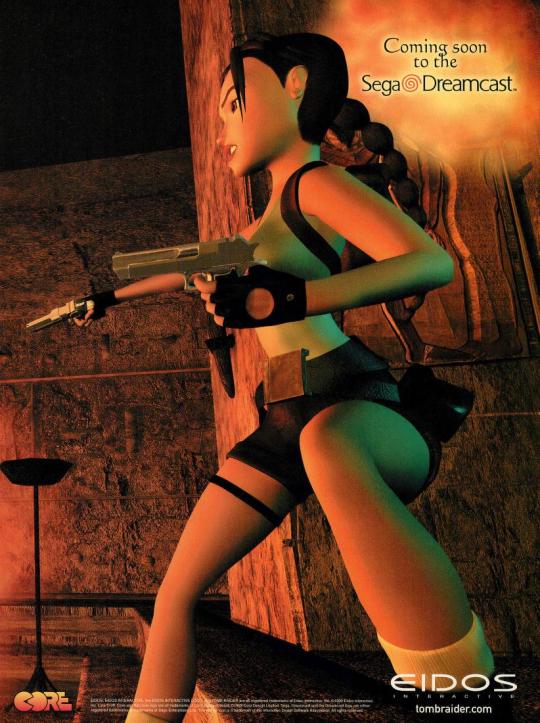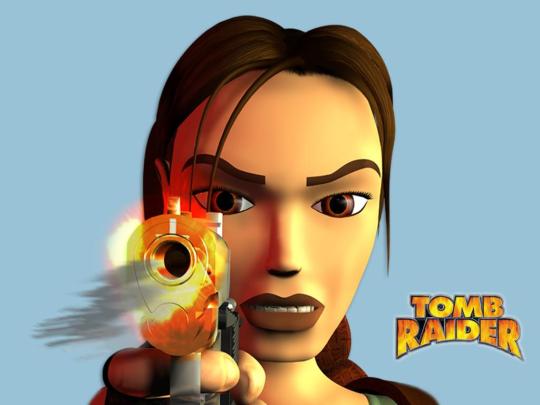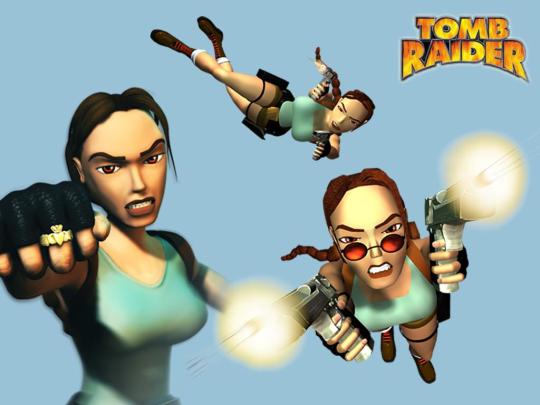#Tomb Raider: The Last Revelation
Photo

Flip Switch
'Tomb Raider: The Last Revelation'
PlayStation
133 notes
·
View notes
Text
Tomb Raider's Main Themes
by Nathan McCree & Peter Connelly
#tomb raider#tomb raider II#tomb raider III#tomb raider III: adventures of lara croft#tomb raider: the last revelation#tomb raider: chronicles#tomb raider: the angel of darkness#lara croft#nathan mccree#peter connelly#the TLR one is my personal favourite i think
103 notes
·
View notes
Text
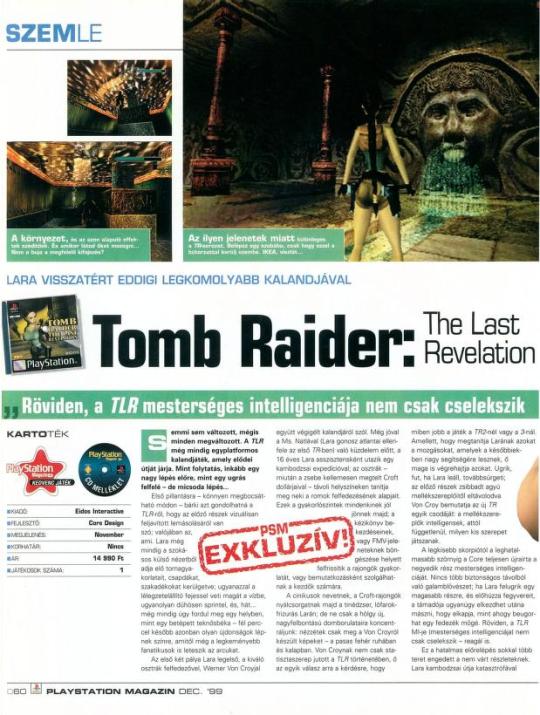

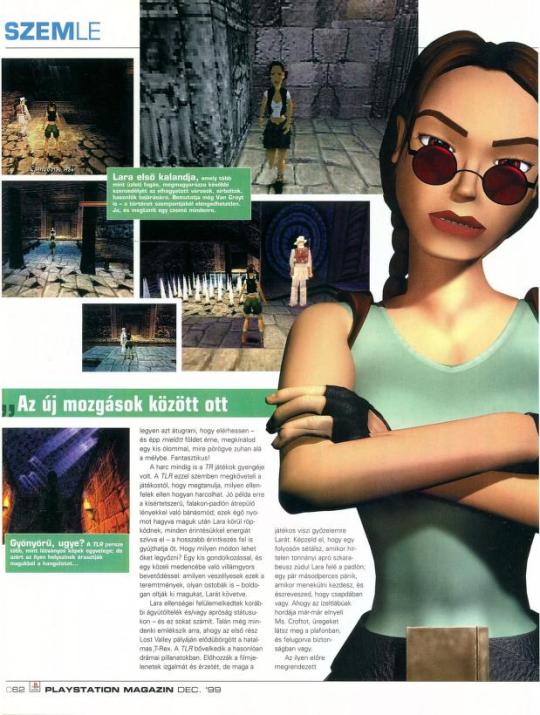
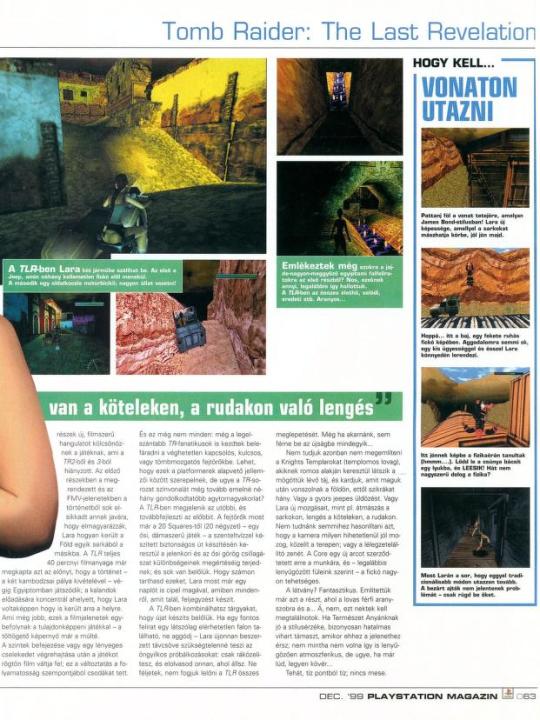

55 notes
·
View notes
Text
#Tomb Raider featuring Lara Croft#Lara Croft#Rise of the Tomb Raider#Tomb Raider II starring Lara Croft#Tomb Raider II#Lara Croft and the Guardian of Light#Lara Croft GO#Lara#Lara Croft Tomb Raider: Anniversary#Lara Croft Tomb Raider#Tomb Raider: Anniversary#Lara Croft Tomb Raider: Legend#Tomb Raider: Legend#Tomb Raider: The Last Revelation#Shadow of the Tomb Raider#Tomb Raider#Tomb Raider: Underworld#The Tomb Raider Trilogy#Tomb Raider III: Adventures of Lara Croft#Tomb Raider III#Video Games#Gaming
8 notes
·
View notes
Text
Child me opening up Tomb Raider: The Last Revelation only to find out it had no Croft Manor section:

#the undead skeleton thing in the main menu made me too scared to start the game when i was a kid#i didn't get past the main menu 🤣#tomb raider#tomb raider: the last revelation
5 notes
·
View notes
Photo


#Lara Croft#Tomb Raider#Daz3D#daz studio#Daz 3D#dazstudio#daz#render#3d#3dart#3d art#art#don't delete my watermark!#Tomb Raider IV#Tomb Raider: The Last Revelation
24 notes
·
View notes
Text
I really love the old Tomb Raider games because they start off as your run-of-the-mill archaeologist exploration games and by the end you're fighting the egyptian god Set and the immortal God-Queen of Atlantis
32 notes
·
View notes
Text
Tomb Raider: The Last Revelation (review/analysis)
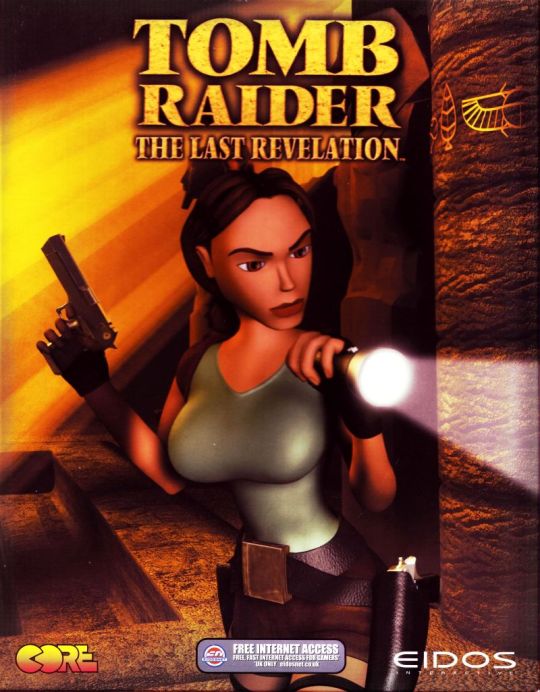
Tomb Raider: the Last Revelation, the fourth game in the series, is probably its peak. It is set entirely in Egypt and features Lara back in more familiar environments of ancient temples and tombs after the modern high-tech and urban environments from the previous game.
That Core design stuck with the same basic game engine for four more games past the first might have been viewed as stagnation at the time, but that meant they could improve and fine-tune it over the course of years. The small improvements added over the years really show themselves in this game. There is better lightning and even mist effects. Lara’s model is now more detailed. In-engine cutscenes allow for lip movements and blinking. The graphics are still blocky and the textures often grainy, but thanks to great art design this game looks really nice and adds a lot to the atmosphere.
Gameplaywise, the major expansion is the ability to go back and forth between levels. In prior TR games, level progression was completely linear (even if TR III experimented by giving you the ability to choose which order to do each section in). You went from level 1 to 2 to 3 and so on. This is not always so in TR IV. In this game, you can go back and forth between levels. Certain sections still have traditional linear level progression, most notably the beginning and the end of the game. But the bulk of the game, the Karnak, Alexandria and Cairo sections are this interconnected sets of levels. You have to go back and forth to find items and solve puzzles in order to progress.
They are essentially gigantic level complexes, perhaps each section is best viewed as one giant level. The level changes are functionally just loading screens between each area. This enables the level design to function on a scale that wasn’t possible in earlier games. The basic building blocks of the level design hasn’t changed, it is just spread out over these massive level complexes now.
The end result can be both impressive and frustrating. It can be a lot of fun to explore these large interconnected level sets and solve its puzzles and challenges. It helps that the graphics and art direction are the best of any game yet. They makes even the largest and most complex levels of previous games look tiny in comparison.
It also means the levels are far more challenging than before. The sheer amount of area you have to explore if you are stuck to find a key item or puzzle solution can be tiresome. And going back and forth between levels naturally involves some backtracking, especially if you are trying to find the right solution. Some of the puzzle design is admittedly overly cryptic too, with the clues far too well hidden. There are at least two puzzles where you have to look up into holes in the ceiling with the binoculars and turn on the binoculars lighting to see the clues, which is far too obtuse.
So even if it is in my opinion the best game in the series, it is perhaps not where beginners to TR should start. Granted, the difficulty curve of this game is actually reasonable, at least compared to TR II and III. The combat is also more forgiving than TR III, there is poison in this game but far less enemies that can give it.
Still, this game is the longest and most complex game in the series. And it is due to these interconnected levels, meaning there is a lot more opportunity to get lost and stuck on some puzzle. Despite a sensible difficulty curve, with Karnak the game reaches a level of complexity that previous games weren’t even capable of reaching. Beginners might find it far more frustrating than the comparatively simple TR I.
The gameplay is also expanded in other ways. This game has the first enemies that can jump and do platforming. Which is something truly new to the series, Lara’s ability to jump was previously one of her greatest advantages to her enemies. There are some enemies she can’t just avoid by jumping a gap anymore.
There are also minor expansions of Lara move-set, the most important is probably being able to shimmy around corners on ledges. It makes her move-set feel more natural.
Lara can also hold on to and swing from ropes now. She can also aim manually by using scope sights on her guns. The actual execution of these mechanics are however not great.
The rope-swinging mechanic is infamously bad. The controls for it are just clunky and finicky. Which is a major problem as you have to make a lot of minute adjustments to Lara’s position and direction on the rope to have any success with it.
Manual aiming guns with the scope is also difficult. There is no mouse control, just keyboard or joystick and that is not ideal for aiming guns. There are some fun implementations of the scope, but they just serve to illustrate the problems. The most annoying is the shooting gallery puzzle, where you have to shoot down a large amount of targets on a timer. And this is almost impossible to do, at least on a keyboard. So it is easiest to cheat and use explosive arrows with the crossbow to blow up all the targets with one shot. There is a fun easter egg where you can blow the head off the skeleton warriors with a scoped shot and they will walk around aimlessly, often falling off ledges. But this is very difficult to do, because the skeletons are moving targets which are very hard to hit with the clunky controls. The only enemy that the scope is really useful against are stationary sentry guns if you get behind them, because of them being stationary.
Despite these faults, the end result is an impressive achievement, the longest and most epic Tomb Raider game. And we actually get a story to match that.
In fact we have an actual story in this game, one that you can actually take somewhat seriously. We have themes, I’m not kidding. I’m gonna go into some detail here, so spoilers for a game released 22 years ago.
Instead of Croft manor as a tutorial, this game begins with a 16-year old Lara, in 1984. We get to see her first adventure, an exploration into Angkor Wat for a weird artifact called the Iris. The tutorial is given by her mentor, “the renowned archaeologist-adventurer Werner von Croy” (his own words). They banter a lot, but soon we see a darker side of Von Croy. According to him “the root of all adventuring” is “the craving to win”. Lara finds an inscribed warning by the iris, promising “vengeance on those who remove it”, and says they “should lend it some respect”. Von Croy takes no heed of such “superstitious hocus-pocus” and tries to remove the iris nevertheless. This sets off a massive trap that ends with him trapped in the tomb. This is the end of flashback.
We rejoin Lara as an adult exploring a tomb in Egypt. Lara is in search of an ankh, the amulet of Horus. But upon removing it from a sarcophagus, it turns out that it is a very special amulet, one which keeps the god Seth imprisoned. Seth is evil in this game, and this means literally the end of the world. This would also mean the end of Lara’s artifact collection, so she decides to stop Seth. Problem is, Von Croy did survive his entombment, and he is also after the amulet. So now there is a race to avert the apocalypse.
It is still a cartoonish story, of course. Werner is just a much of a caricature as characters in earlier games, with a ridiculous Austrian accent, with even more ridiculous pompous dialogue. One thing that literally happens in the Cambodia sequence is Werner wants Lara and him to race at one point, on the count of three, and then he starts running at two, like a literal small child.
But this is a much deeper story than we have got in this series up to this point. There is an implied criticism of the arrogance of adventure genre protagonists, removing ancient artifacts without caring about the consequences. It’s a probably mandatory course correction after the sheer amoral nature of TR III, with Lara massacring English museum guards and tribespeople just to gain some meteorite shards.
In TR IV, there is even subtext. It’s fairly obvious, but the script doesn’t explicitly state them so it is subtext nonetheless. The writers clearly expect you to pick up on the irony of adult Lara committing the exact same mistake as she chided Von Croy for as a kid without them explicitly telling you this. This is of course isn’t exactly super-complex storytelling, but it is way more than the series has expected of its audience up to this point.
Lara feels way more human here, like she is a character with a past that is elucidated beyond the manual booklet. And one who changes over-time, grows arrogant and makes mistakes. I joked earlier about her only trying to save the world to save her collection, but this game makes a much better job of making us believe that she is trying to do the right thing. Especially as she possibly ends up paying a heavy price in the end.
She even has an actual friend here, beyond the much-abused butler Winston. It is the first person that Lara is shown to have feelings of friendship for, and adds to the humanization she is given in this game.
The friend is Jean-Yves, an archaeologist who is heavily based on real-life archaeologist Jean-Yves Empereur. Empereur discovered the remains of ancient Alexandria in the harbour of the present day city, and it is clear that the developers drew on his work and life. Empereur sued the developers for including his likeness and he was well-justified. In fact there is nothing in the game to suggest that the character isn’t literally Empereur.
This is just an amusing anecdote, but the fact that the developers looked at real-life archaelogical research (which was quite fresh at the time of development) says something about the research put into the environments in this game.
The whole game, barring the opening tutorial-flashback is set in Egypt. It is partly an attempt to course correct from TR 3, which had a lot of modern industrial and urban settings. In this game we get Lara back into raiding ancient temples and tombs for the bulk of the game.
The Egypt setting was used for a section in the first game, but that was just four levels. TR IV outdoes it by dedicating the bulk of a fairly lengthy game to it.
The problem of setting the game in just one country is that it can constrict the variety of environments. And sure, you get a lot of sand and Egyptian mural textures in this game. But the developers did some research in an effort to find a variety of Egyptian history to draw from.
For example, to give the player a break from the use of pre-macedonian traditional “pharaonic” imagery, the game’s Alexandria section goes full into ancient Greek imagery, and it ends with Lara finding Cleopatra’s palace. That Egypt had a Hellenistic period is of course not obscure knowledge, but it speaks to the effort that went into this game’s image of Egypt, there is clearly more effort than your standard Egypt-set adventure story.
The game’s approach to Egyptian history and mythology is loose at best (Set being an evil bringer of the apocalypse is the most obvious), but there is a borrowing of real locations and concepts from Egyptian history that adds richness to the game’s depiction of Egypt. You get to play Senet and use canopic jars to solve puzzles, for example. You get a whole section set in Karnak, with the Great Hypostyle Hall and the sacred lake being literal levels in the game. And while you get the “greatest hits” of Ancient Egypt in pop culture, you also get some sign of deeper research. Not just the great sphinx, but also Lara reading from the dream stele. Not just Khufu’s great pyramid, but also Menkaure’s pyramid and the Queens’ pyramids.
This use of real history made the game a mind-expanding experience to play as a kid. Without being meant as educational, I was learning things. This long, complex and challenging game felt even more imposing when you learnt from looking things up that concepts like senet were real. Even today it feels impressive that the developers did put this kind of effort into it. Even today these tidbits of actual history adds to the variety and richness of the game’s environments.
Not that the real life locations depicted in the game are at all intended to be accurate. The game sets the tone right away with its approach to real locations with Angkor Wat, which is turned into an adventure genre temple filled with dart traps. Karnak is given a similar treatment, as is the Giza pyramid complex. It is all in the name of making a fun game. Yet the usage of real locations as the starting point for the fantasies of this game’s level design works to add a sense of realism to the game. It is one thing to explore a complete fantasy Egyptian temple, quite another for Lara to explore and discover fantastical things within the very real Karnak.
The game’s apocalyptic theme is also really well-made, especially as things starts to get weirder and more supernatural as the game progresses. It begins with strange rivers of blood and reanimated mummies after the ankh is removed. Yet the supernatural stuff stays safely within tombs for most of the game. There are then reanimated skeletons in a beach near Alexandria, as a first sign the supernatural is spilling over into normal reality. It is finally in the penultimate section, Cairo, that the player can really see that the end of the world is literally near.
Cairo in the game it is far from normal. Supernatural creatures has taken over the city, Egyptian soldiers are fighting a losing battle against insect swarms, giant beetles, a minotaur and a dragon-like creature. The sky has taken on unnatural colours, and is green and perpetually overcast. All the bizarre supernatural stuff you might expect from a Tomb Raider game, but it taking over a modern city like this is actually quite scary. Even the human antagonist Von Croy is possessed by Set, with the story implying his ruthless nature (even before his possesion he kidnaps Jean-Yves to pressure Lara into giving up the artifacts she tries to use to stop Set) makes him vulnerable to such a possesion.
I also like the story in this section, which has Lara team up with an Egyptian army officer, Sergeant Azizas. Their mutual respect for each other is quite touching and humanizes Lara further. His sacrifice to defeat the dragon-like creature helps foreshadow Lara’s own eventual sacrifice.
The final section is Giza, where the apocalyptic mood continues and giant scorpions, one of the most memorable enemies in the game, are introduced. Giza returns the game to a mostly linear structure, it may seem a bit disappointing but after Alexandria and Cairo there was no way to turn up the complexity further. And there are still fun bits. The game makes the pyramids into intricate platforming puzzles, and while it is sometimes hard to tell which tile is sloped so Lara will slide off it, they are fun in my opinion. The final section before the encounter with Set has you solving water pouring puzzles with the threat of being eaten by Ammit if you fail, it’s great.
Whereas throughout much of the game there was some sense of Lara going through Egyptian history in chronological order, with going from Karnak to Alexandria to Cleopatra’s palace to modern day Cairo, this time the game goes back in time to one of the oldest monuments in Egypt, the great pyramid. Yet it feels appropriate thematically, the Cairo section proved the present inadequate to stand up to Set, so you have to go back to the past to solve it.
And in fact, even Lara is unable to defeat Set directly, your weapons are useless against him because he is literally a god. Lara’s only option is to just seal him inside the great pyramid with the Amulet of Horus. It means she has to leave the amulet behind, Lara having learnt her lesson about ruthlessly taking artifacts from ancient civilizations. If there is a Last Revelation in this game, that is probably it.
And it seems it is truly her last revelation too. The game ends with Lara buried as the corridor in the pyramid leading outside collapses. A reformed Von Croy, now no longer possessed, tries to rescue her but fails. It is an ironic mirror of the scene from the opening. There Von Croy is trapped because of his greed and arrogance despite Lara warning and trying to rescue him. And in the ending Lara is trapped because of an act of altruism. Rocks falls on her, and it is implied she dies. This game actually has Lara acting unambiguously altruistically for once, and it proves it by her making the ultimate sacrifice.
This was shocking back in 1999, even Core’s own boss Jeremy Heath-Smith was shocked and angry at what writer Andy Sandham and the other developers had done. It was an expression of tiredness at the near-constant crunch Core had experienced to the pressure from Eidos of developing sequels to Tomb Raider. Yet the game doesn’t have a tired feeling at all.
In fact, viewed as the end of Tomb Raider, its sheer ambition and scale makes it feel like a fitting finale. The massive level complexes taking the design principles established in the first game to their absolute limit. The very setting takes the series back to its roots, the focus is Lara is exploring ancient tombs and temples again, and indeed Egypt was visited in the first game. And the comparatively serious story, which actually does some interrogating of the very premise of the series is also appropriate for a grand finale. If this was the end of Tomb raider, it could hardly have gone out on a more appropriate note.
Of course it wasn’t the end at all. Lara returned in a fifth game, Chronicles, the very next year, and a proper sequel followed in 2003. Yet Tomb Raider IV still feels like an end of sorts, it is the last proper classic Tomb Raider game. Chronicles still used the basic engine and control system from TR I, but it was always meant as a side-venture to tide the fans over until a proper sequel, Angel of Darkness could be released (of course that plan didn’t work out).Chroniclesis a short game of episodic vignettes from Lara’s past, not a sequel proper. After that came the more or less unfinished Angel of Darkness, and then the Crystal Dynamics would completely re-invent Tomb Raider and abandon the classic style and engine.
So The Last Revelation is perhaps not the last revelation, but it is the last fully-formed Tomb Raider game by Core Design, after this everything changed, and not necessarily for the better.
9 notes
·
View notes
Photo



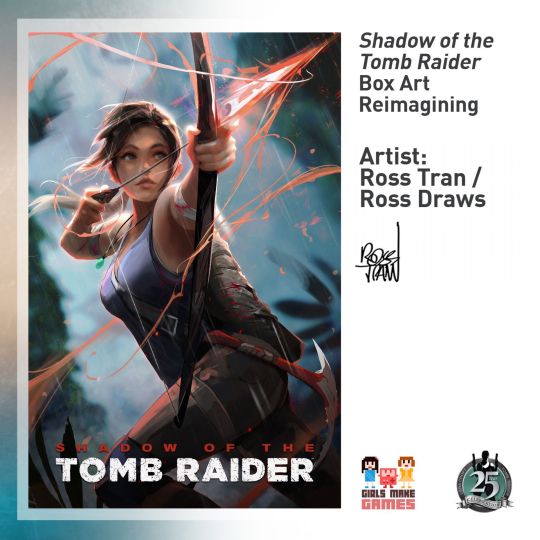
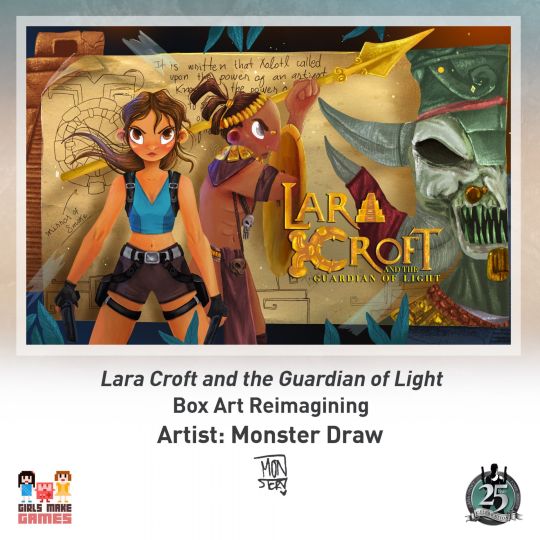
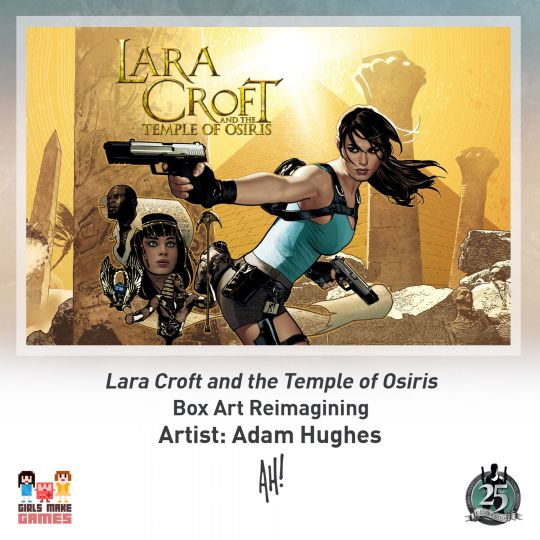

25th Anniversary Tomb Raider Reimagined Box Art Prints
In celebration of 25 years of Tomb Raider, fans were given the opportunity to purchase the set of 15 prints of the reimagined box arts. They were created by legendary artists from around the world, such as Andy Park, Adam Hughes and Brenoch Adams and were released digitally throughout the year 2021, depending on the game's celebratory month. Each print is 11x17 inches, on uncoated stock paper.
As described on the Square Enix item listing page: 'Artists were chosen to ensure a diverse array of styles and were given full freedom to reimagine the box art, resulting in Lara Croft portrayed in comic, anime, whimsical, realistic, and surrealistic styles. No matter the genre or medium, as a pop-culture icon of 25 years Lara Croft is instantly recognizable throughout the art series'.
The proceeds from the sale was given to the charity, 'Girls Make Games', a cause that encourages more females to get into the games industry. This item went on sale on Lara's birthday in 2022, 14th February, and although it was planned to run for three weeks only, it was extended to a whole month, ending on 14th March. The prints were finally dispatched to customers on 12th May '22.
The sale was a print to order listing, so there is no leftover stock, and the window to purchase it from the official SE store is over. People have wasted no time in reselling them. On eBay, there are listings in the USA and France, with values of over $200 and €200.
#Tomb Raider 1#Tomb Raider 2#Tomb Raider 3#Tomb Raider: The Last Revelation#Tomb Raider Chronicles#Tomb Raider: The Angel of Darkness#Tomb Raider: Legend#Tomb Raider: Anniversary#Tomb Raider: Underworld#Lara Croft and the Guardian of Light#Lara Croft and the Temple of Osiris#Tomb Raider Reloaded#Tomb Raider (2013)#Rise of the Tomb Raider#Shadow of the Tomb Raider#25th Anniversary#Art#2021
7 notes
·
View notes
Photo

Official Australian PlayStation Magazine #29, Dec '99 - 'Tomb Raider: The Last Revelation' cover.
144 notes
·
View notes
Video
youtube
Aligning Planets Like No One's Business! | Tomb Raider 4 Part 13 | Let's Play 🪐
0 notes
Text

35 notes
·
View notes
Text

the last revelation anime
#tomb raider#tomb raider the last revelation#screenshot redraw#lara croft#fake screenshot#my drawing#colored stuff
43 notes
·
View notes
Text
On the 22nd of November, twenty-four years ago, Tomb Raider: The Last Revelation was released in North America for Windows and PlayStation.
The narrative follows archaeologist-adventurer Lara Croft as she races to imprison the Egyptian god Set after accidentally setting him free. Gameplay features Lara navigating levels split into multiple areas and room complexes, fighting enemies and solving puzzles to progress.

Production of The Last Revelation began in 1998. Due to the strain of developing Tomb Raider titles non-stop since 1996, and general fatigue with the character, the Core Design staff wrote the narrative to end with Lara's death. While the same basic engine was used, it was extensively redesigned for better graphics and more intelligent enemy behaviour.
Reception of the game was generally positive, with many praising it as a return to form, but noting a lack of major innovation. Several critics felt the series was becoming stale.
The Last Revelation is the eighth best-selling Tomb Raider title with over five million copies sold worldwide.
#Tomb Raider#Tomb Raider: The Last Revelation#Lara#Lara Croft#Core#Eidos Interactive#Video Games#Gaming
3 notes
·
View notes

